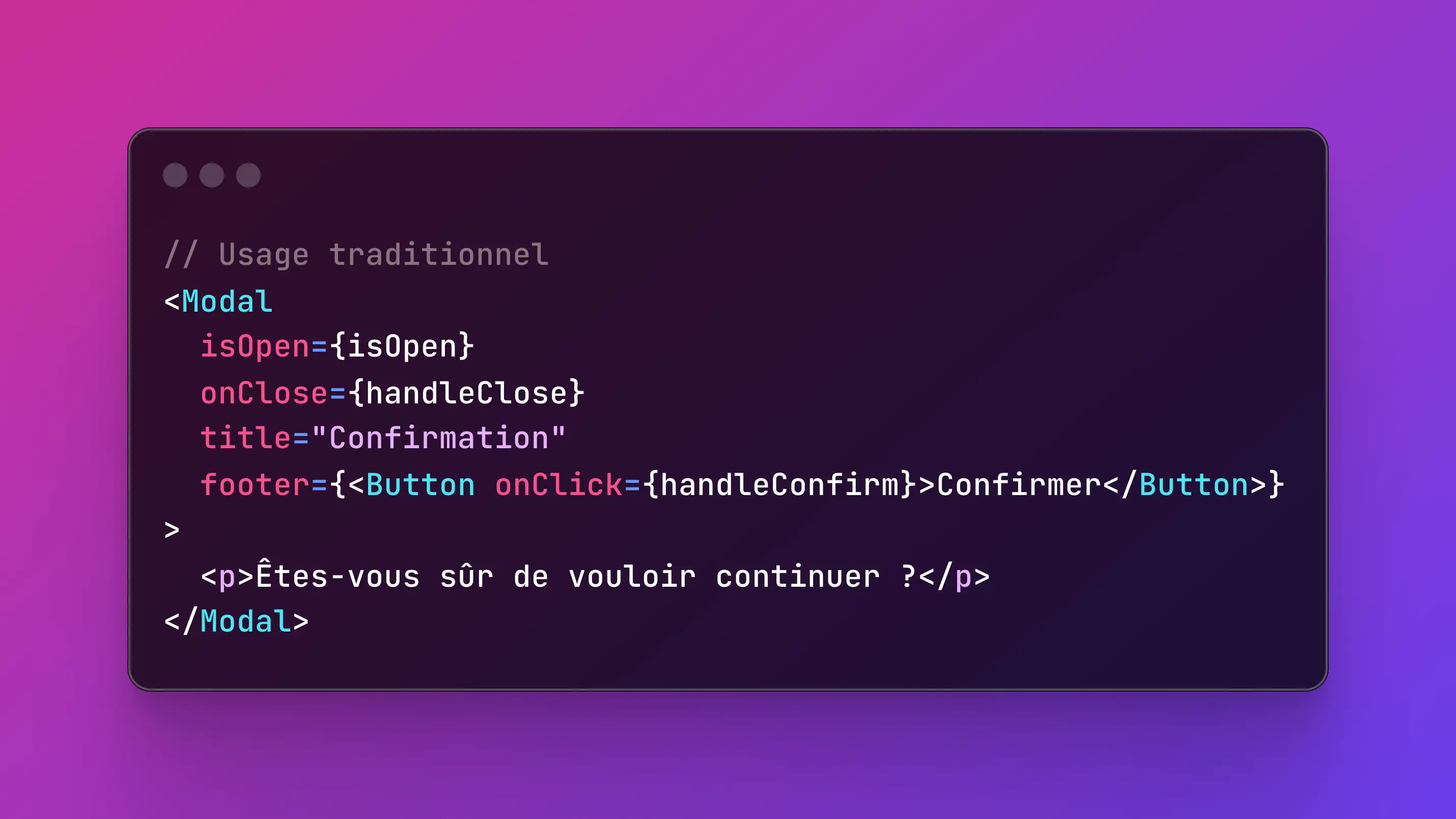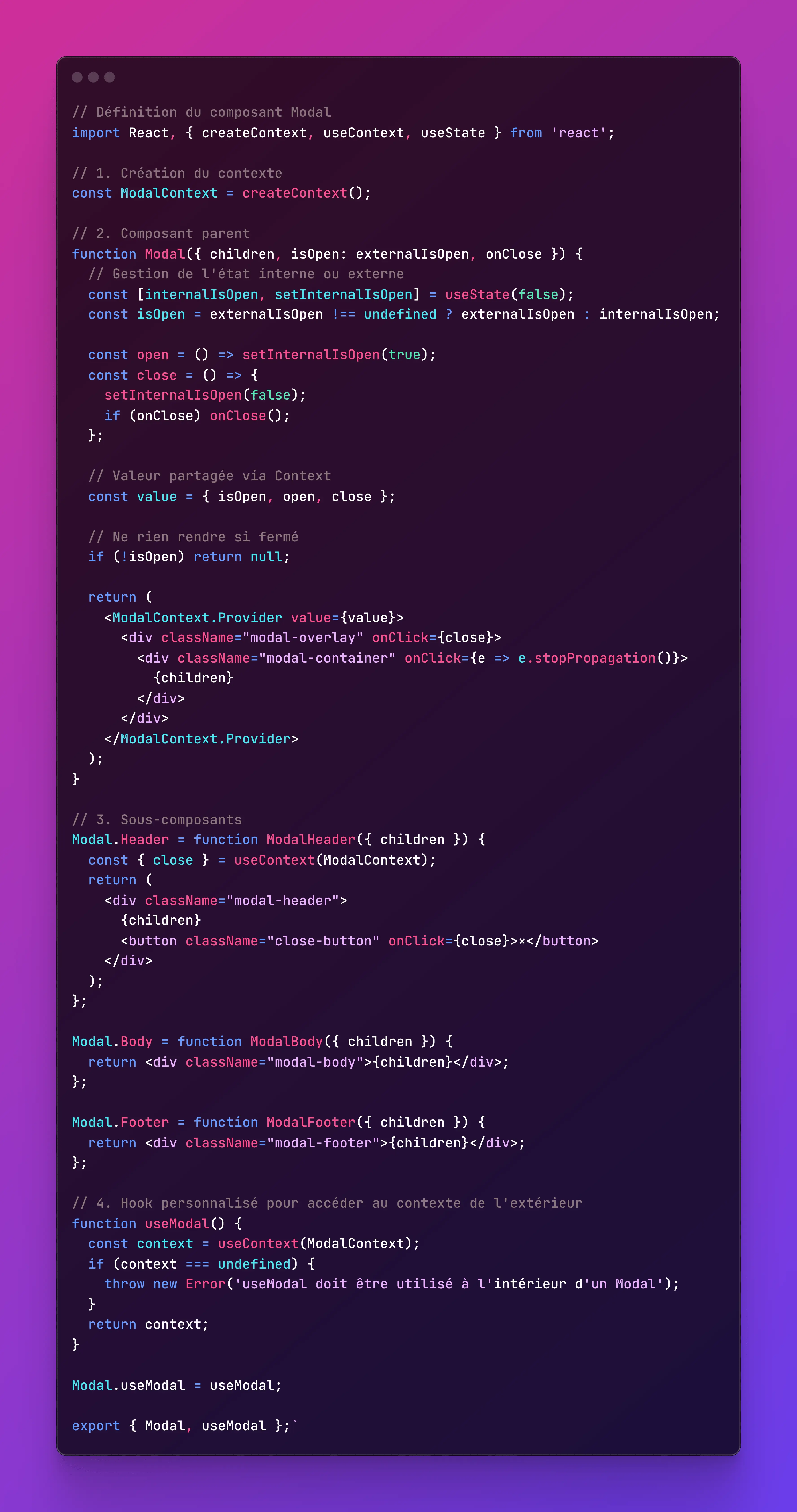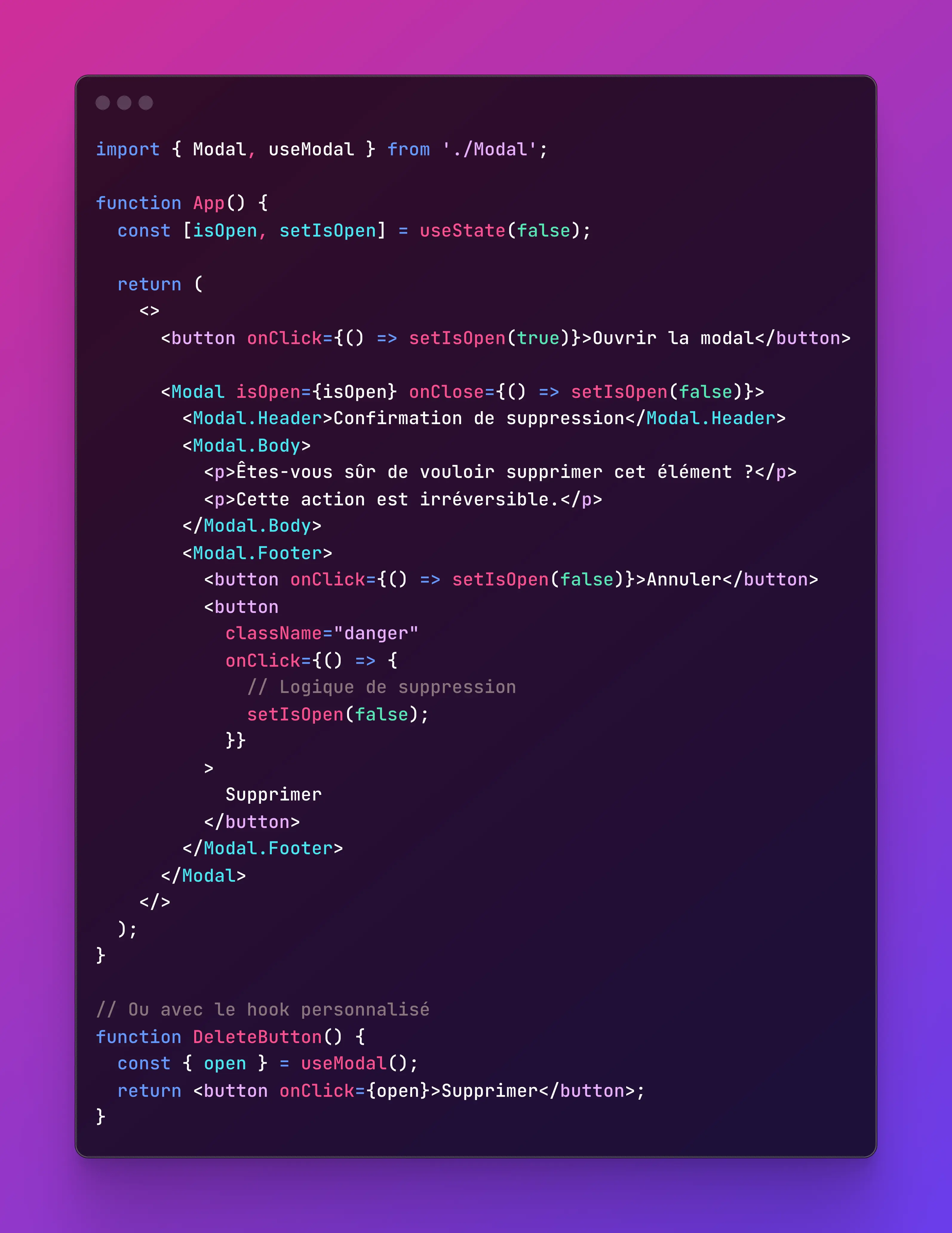Elevate Your React Code with the Compound Component Pattern + Context API

Today, I want to share an approach that has transformed the way I build React components: the "Compound Component" pattern combined with the Context API. If you've ever worked on complex components like a Modal, you know that managing state and props can quickly become cumbersome.
Why This Pattern is a Game-Changer
- More intuitive and declarative API - The JSX structure directly reflects the visual structure.
- Better flexibility and composition - Easily customize the order and inclusion of elements.
- Separation of concerns - Each subcomponent has a unique responsibility.
- Reduced prop drilling - The Context API eliminates the need to pass props deeply.
The Traditional Approach
Traditionally, we would implement a Modal like this:

This approach works but becomes rigid when you want more customization.
Implementation with Compound Component + Context API
With the Compound Component pattern and Context API, we can transform this into a much more elegant API:

How to Use This Component
Here's how we now use our Modal with the Compound Component pattern:

Key Advantages of This Approach
- Full control over structure - You can freely arrange your subcomponents as needed.
- Intuitive API - The JSX structure naturally reflects the component’s visual structure.
- State isolation - The Context API manages internal state, making it accessible only where needed.
- Extensibility - It’s easy to add new subcomponents without modifying existing code.
Conclusion
This approach has allowed me to build more maintainable and flexible components that easily adapt to design changes. The Compound Component pattern combined with the Context API provides a better development experience while producing cleaner and more user-friendly code.
Feel free to experiment with this pattern in your own React projects!
Tags: React, JavaScript, Frontend Development, Web Development, Compound Components, Context API